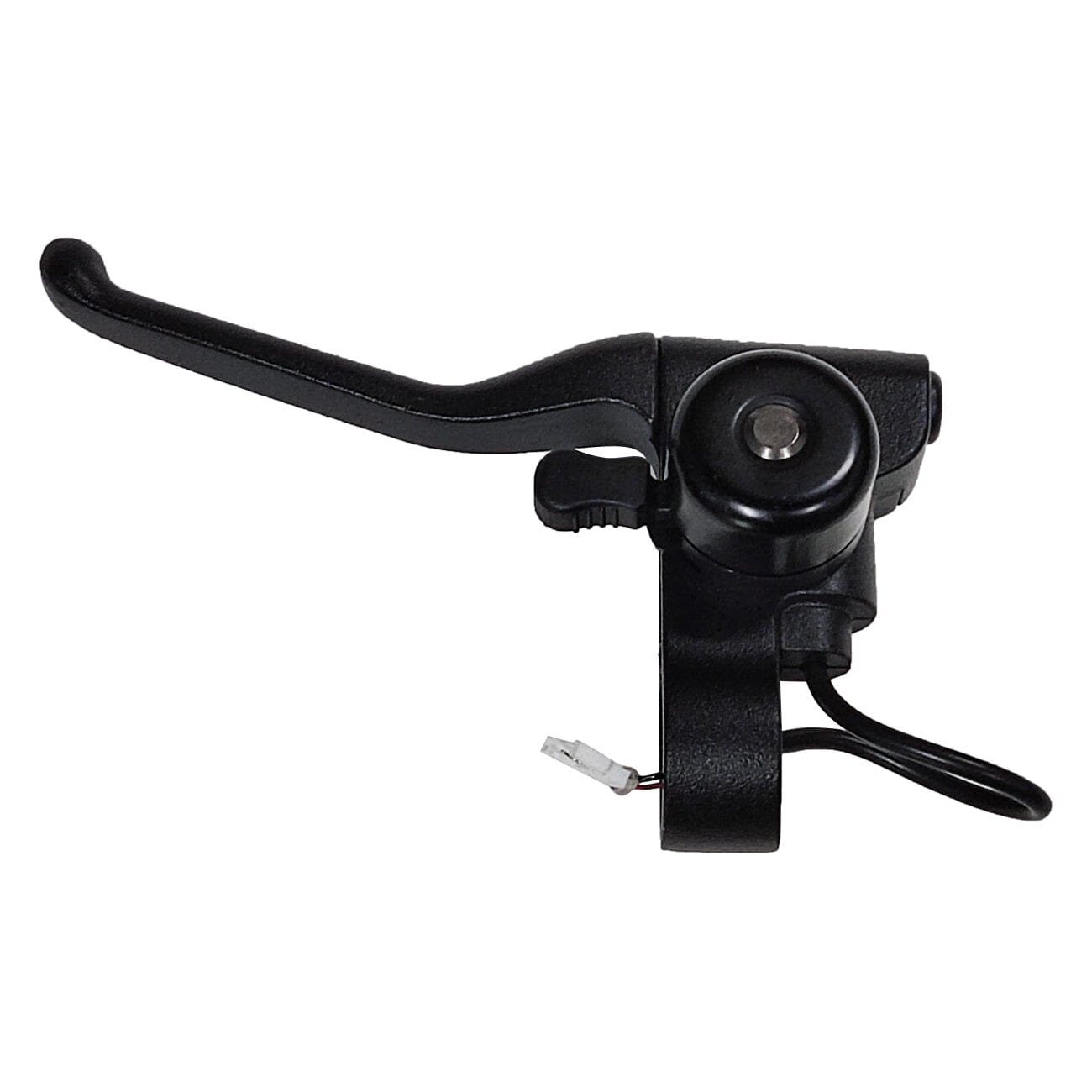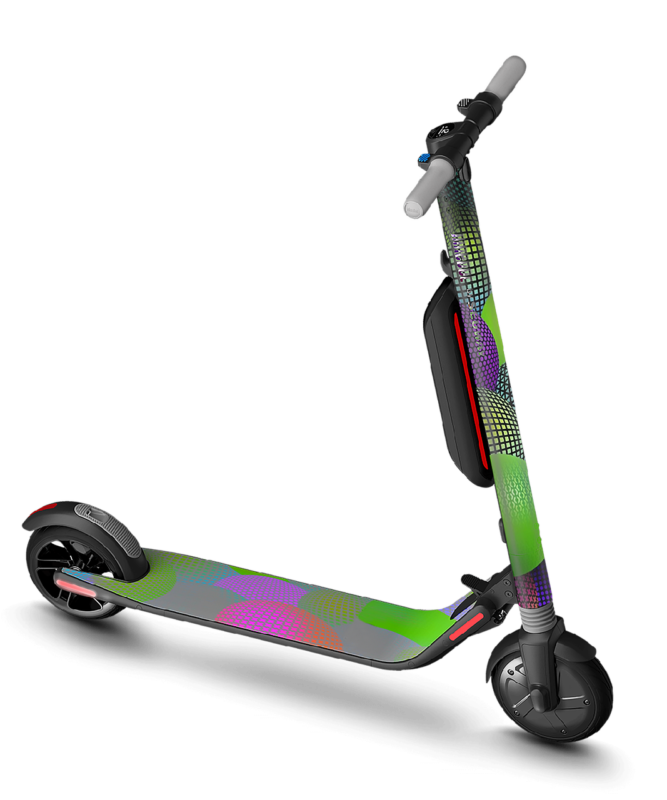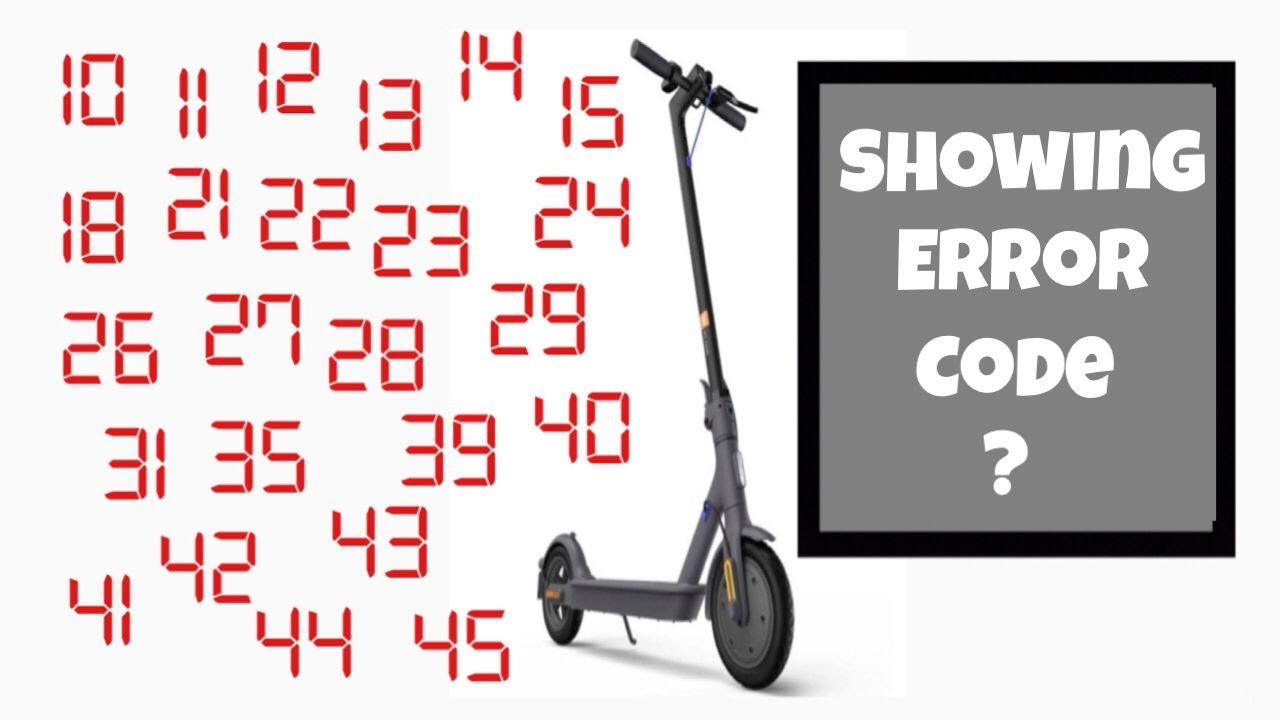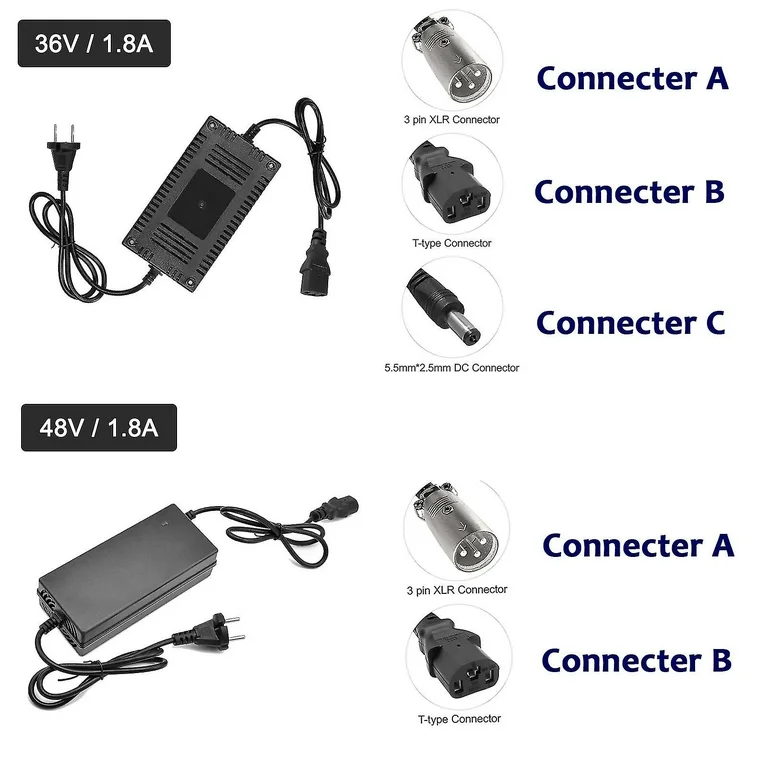Electric scooters have become a staple for efficient, eco-friendly transportation in urban areas. Understanding the various components that make up an electric scooter is vital for maintaining optimal performance and ensuring the longevity of your ride. In this article, we will walk through the essential electric scooter parts and their importance, helping you better understand how each component contributes to the overall performance. We will also provide insights on choosing, maintaining, and upgrading these parts to maximize your scooter’s efficiency and lifespan. Let’s dive right in!
1. Introduction to Electric Scooter Parts
When it comes to electric scooters, the performance and durability of your ride largely depend on the quality and condition of the parts. So, what are the key components that every electric scooter needs? From the motor to the battery, each part plays a crucial role in ensuring your scooter runs smoothly. Without understanding these parts, it can be difficult to troubleshoot issues, perform maintenance, or even know when it’s time to replace certain components.
What’s the real story? Well, a solid understanding of electric scooter parts is necessary not just for repairs, but for upgrading your ride to suit your needs. Whether you’re looking to enhance speed, range, or comfort, knowing how your scooter functions internally is the first step. Ready for the good part? We’ll now break down the essential parts that make up your electric scooter, and why they matter. Let’s start with the most crucial component: the motor.
2. Key Electric Scooter Parts: A Breakdown
Electric scooters are built with several key components, each serving a specific function. What do these parts actually do? The motor, battery, and controller are among the most important. The motor is what powers your scooter forward, while the battery supplies the energy. The controller acts as the brain, regulating the power flow between the motor and battery.
To make things even clearer, here’s a quick overview of each part:
- Motor: The heart of the scooter, the motor generates the necessary power to propel the scooter forward. Motors come in various sizes and power outputs, depending on the type of scooter.
- Battery: The battery stores the energy needed to run the scooter. Without a high-quality battery, even the best motor wouldn’t function efficiently.
- Controller: This electronic component regulates the amount of power the motor receives. It’s responsible for things like acceleration and speed regulation.
What’s the real story behind these parts? They determine everything from speed to range and even comfort during your ride. Ready for the good part? Let’s now discuss the motor and battery in more detail and why they’re essential to your scooter’s overall performance.
Motor Type Comparison
| Motor Type | Power (W) | Efficiency | Speed (mph) |
|---|---|---|---|
| Hub Motor | 250W – 500W | High | 15-20 |
| Mid-Drive Motor | 500W – 1000W | Very High | 20-30 |
| Direct Drive | 1000W+ | Moderate | 30+ |

3. The Role of the Controller
The controller may seem like a minor part, but it plays an enormous role in regulating your electric scooter’s functions. What does the controller actually control? The controller is responsible for managing the flow of power from the battery to the motor. It controls acceleration, speed, and, most importantly, safety features like the brake system. Without the controller, the scooter’s motor would not receive the necessary input to function.
But here’s the kicker: choosing the right controller can drastically improve your scooter’s performance. For instance, if you’re looking for smoother acceleration and better battery management, a higher-end controller will help you get there. Additionally, controllers can also feature regenerative braking, which allows the motor to assist in slowing the scooter down and even recharge the battery.
To sum it up, the controller is more than just a switch—it’s the brain of the scooter, making it essential to ensure it’s working properly. What’s the real story? Keeping the controller in top shape is vital to avoid issues like unresponsiveness or electrical failures.
Controller Specifications
| Feature | Entry Level | High-End |
|---|---|---|
| Power Regulation | Basic | Advanced |
| Speed Control | Basic | Precision |
| Regenerative Braking | No | Yes |

4. Wheels and Tires: Selecting the Right Ones
Selecting the correct wheels and tires for your electric scooter is not just about aesthetics—it’s about performance and safety. The type of tire you choose will affect the overall ride quality, speed, and handling. But here’s the kicker: Choosing the right size and type of tire can make all the difference, especially when navigating different terrains.
Electric scooter wheels are typically available in two types: pneumatic (air-filled) and solid. Pneumatic tires provide better shock absorption and traction, making them perfect for rough or uneven surfaces. Solid tires, on the other hand, require less maintenance but don’t offer as smooth of a ride.
Another important factor is wheel size. Larger wheels tend to perform better on rough surfaces, while smaller wheels are better for speed on smooth pavements. Understanding your typical riding environment can help you decide which tire will best suit your needs. So what’s the real takeaway? Choose a tire that aligns with your daily commute and terrain for the most comfortable and safe ride.

Tire Size and Type Comparison
| Tire Type | Advantages | Disadvantages |
|---|---|---|
| Pneumatic | Better shock absorption, better traction | Higher maintenance, more punctures |
| Solid | No punctures, low maintenance | Less comfort, reduced traction |
5. Brakes: Ensuring Safety and Control
When it comes to electric scooters, brakes are non-negotiable. What happens if your brakes fail? You won’t be able to stop, and that could lead to serious accidents. Electric scooters generally come with two types of brakes: mechanical and electronic.
- Mechanical Brakes: These are the traditional brakes you’ll find on many scooters. They usually involve a disc or drum brake system, where friction slows down the scooter.
- Electronic Brakes: These brakes use the scooter’s motor to slow it down. They are often combined with regenerative braking, which recovers some of the lost energy and sends it back to the battery.
What’s the real story? A combination of both mechanical and electronic brakes will give you the best of both worlds—safety and efficiency. Make sure to check brake performance regularly and replace any worn parts to ensure top-notch braking power.

Brake Types and Comparison
| Brake Type | Advantages | Disadvantages |
|---|---|---|
| Disc Brakes | Reliable, powerful | Requires maintenance |
| Electronic Brakes | Less wear, energy recovery | Less power, can fail in certain conditions |
6. Suspension Systems: Improving Comfort and Ride Quality
The suspension system is often overlooked, but it plays a significant role in ensuring a smooth ride. Ever had a bumpy ride on your scooter? That’s where suspension comes in. Suspension systems absorb shocks from uneven surfaces, making the ride much more comfortable.
Here’s the deal: The suspension system varies depending on the scooter type. Some scooters come with front suspension, others with rear, and some feature both. Full suspension systems are ideal for longer rides and rougher terrain. However, if you’re mostly riding on smooth surfaces, a scooter with no suspension or front suspension may be sufficient.
Keep in mind that regular maintenance of your scooter’s suspension system is important for continued comfort. Ready for the good part? Maintaining the suspension not only improves ride quality but can also prevent wear and tear on other parts of your scooter.

Suspension System Types
| Suspension Type | Ideal Terrain | Pros | Cons |
|---|---|---|---|
| Front Suspension | Smooth roads | Lower cost, easier maintenance | Less comfort |
| Full Suspension | Rough terrain | Best comfort, smooth ride | More expensive, heavier |
7. Deck and Frame: Supporting Your Scooter
The frame and deck provide the structural integrity of your scooter. What makes a solid frame? A scooter’s frame should be made of durable materials such as aluminum or steel. Aluminum frames are lightweight and resistant to rust, while steel frames are heavier but offer more durability.
The deck, where the rider stands, also plays a critical role in the scooter’s overall performance. A larger deck provides more foot space and better stability, especially on longer rides. However, it also adds weight to the scooter. Choosing the right deck size depends on your preference for comfort versus portability. What’s the real story? Ensure that both the frame and deck are sturdy enough for your weight and usage.
Deck and Frame Material Comparison
| Material | Weight | Durability | Cost |
|---|---|---|---|
| Aluminum | Light | Moderate | Medium |
| Steel | Heavy | High | Low |
8. Lights and Indicators: Visibility and Safety Features
When riding at night, visibility is paramount for your safety. What’s the real story? Without proper lights, you’re at risk of accidents because other drivers won’t see you. Electric scooters typically come with front and rear lights. However, to ensure maximum visibility, it’s essential to consider adding additional lighting systems, such as side lights or reflectors.
But here’s the kicker: A good lighting system not only improves safety but can also make your ride more enjoyable. For instance, bright lights help you see the road ahead, while reflective decals can make you visible to others from all angles.
Investing in high-quality lights and ensuring they are always in good working condition can prevent accidents and increase overall safety during your commute. What’s the real takeaway? Never compromise on lighting, especially if you plan on riding at night.
Lighting System Options
| Lighting Type | Visibility | Lifespan | Cost |
|---|---|---|---|
| LED Lights | High | Long | Medium |
| Reflective Decals | Medium | Long | Low |
9. Handlebar and Grips: Comfort and Control
The handlebars and grips directly affect the comfort and control you have over your scooter. What’s the real story? If the handlebars are too high or low, or the grips too hard or soft, your ride can feel uncomfortable, reducing your control and enjoyment.
Choosing the right handlebar size and grip material can significantly improve comfort. For example, rubber grips offer a more comfortable feel compared to plastic grips, especially during long rides. Adjusting the height of the handlebars can also prevent strain on your wrists and back, making your scooter more ergonomic.
Ready for the good part? Handlebar height adjustments can provide better maneuverability, while custom grips can make your ride feel more tailored to your needs. Make sure to test different configurations to find what works best for your comfort level.
Handlebar and Grip Material Comparison
| Material | Comfort | Durability | Cost |
|---|---|---|---|
| Rubber | High | Moderate | Medium |
| Plastic | Low | High | Low |
10. Charging System: How to Keep Your Battery Healthy
Charging your electric scooter correctly is essential for extending battery life. What’s the real story? Many riders overlook the charging process, but improper charging can cause long-term damage to the battery. Always use the charger provided by the manufacturer and avoid overcharging.
Here’s the deal: Some scooters feature fast-charging capabilities, but it’s essential to balance speed and battery health. Fast charging is convenient, but regular use of this feature can reduce battery lifespan. To maximize battery life, try to charge your scooter after every ride and store it in a cool, dry place.
Charging System Best Practices
| Charging Method | Speed | Battery Lifespan | Cost |
|---|---|---|---|
| Standard Charging | Slow | High | Low |
| Fast Charging | Fast | Moderate | High |
11. Upgrading Your Electric Scooter Parts
Upgrading your electric scooter parts is a great way to improve performance and tailor the scooter to your needs. So, when should you upgrade your parts? Upgrades are recommended if you want to increase speed, range, or ride comfort. For example, upgrading your motor or battery can provide a noticeable performance boost.
But here’s the kicker: upgrading parts can be expensive, and it’s essential to consider whether the investment will give you the results you want. What’s the real takeaway? Only upgrade parts that will give you the most value for your money. For instance, if you’re mainly using your scooter for short commutes, upgrading the suspension might offer a better return on investment than increasing the motor power.
Popular Scooter Upgrades
| Part Upgrade | Benefits | Cost |
|---|---|---|
| Motor Upgrade | Increased speed and power | High |
| Suspension Upgrade | Improved ride comfort | Medium |
| Battery Upgrade | Longer range | High |
12. Common Electric Scooter Problems and Fixes
Electric scooters, like any machine, face problems from time to time. What are some common issues? Some common electric scooter problems include battery failure, motor issues, and controller malfunctions. Here’s the deal: Many of these issues are preventable with regular maintenance.
For example, to avoid battery issues, always check the charging port for dirt or debris. Ensure that your motor is lubricated regularly to avoid friction and wear. If your controller is malfunctioning, it may need recalibration or software updates. Keeping an eye on these common problems will save you time and money in the long run.
Common Scooter Issues
| Problem | Cause | Solution |
|---|---|---|
| Battery failure | Overcharging, dirt | Clean charging port, avoid overcharging |
| Motor malfunction | Lack of lubrication | Regularly lubricate motor parts |
| Controller failure | Software bugs | Recalibrate or update software |
13. Choosing Replacement Parts: What to Look For
Choosing the right replacement parts is key to keeping your scooter in top shape. What should you look for in replacement parts? Always go for parts that match the scooter’s specifications and brand. Ready for the good part? OEM (original equipment manufacturer) parts are generally recommended, as they ensure compatibility and reliability.
But here’s the kicker: aftermarket parts can sometimes offer better performance at a lower price. What’s the real story? Consider your needs and budget when choosing between OEM and aftermarket parts.
Replacement Parts Comparison
| Part Type | Pros | Cons |
|---|---|---|
| OEM Parts | Guaranteed compatibility, reliability | Higher price |
| Aftermarket Parts | Cheaper, more variety | Potential compatibility issues |
14. Maintaining Your Electric Scooter for Longevity
Regular maintenance is essential for keeping your electric scooter running smoothly. What’s the real story? Without proper care, even the best scooter can break down. Maintenance includes checking the motor, controller, battery, and brakes regularly.
To ensure the longevity of your scooter, follow the manufacturer’s maintenance guidelines, and don’t forget to clean the scooter after each ride. Ready for the good part? Consistent maintenance will extend the life of your scooter and enhance its overall performance.
Maintenance Schedule
| Maintenance Task | Frequency | Tools Needed |
|---|---|---|
| Check motor | Monthly | Motor oil, brush |
| Check battery | Every ride | Multimeter |
| Brake inspection | Every month | Wrench, screwdriver |
15. Conclusion: Getting the Most Out of Your Electric Scooter
In conclusion, the parts of your electric scooter work together to provide a seamless riding experience. What’s the real takeaway? By understanding each component’s role, you can ensure a smoother, more efficient ride. Whether you’re upgrading your parts or maintaining your scooter, regular attention will keep it running for years.
Remember to always choose quality components and perform regular maintenance. This way, you’ll get the most out of your scooter, ensuring both safety and performance. Ready for the good part? Take care of your scooter, and it will take care of you.
FAQ Section
Q1: What are the main components of an electric scooter?
Electric scooters typically consist of a motor, battery, controller, wheels, brakes, suspension, handlebars, and frame. These components work together to ensure smooth operation and safety.
Q2: How do electric scooter brakes work?
Electric scooter brakes come in various types, including disc brakes, drum brakes, and regenerative braking. Each type uses different mechanisms to slow the scooter, with some models offering both electronic and mechanical systems.
Q3: Why is it important to choose the right battery for your electric scooter?
The battery powers the scooter’s motor and determines the range and speed. Choosing a quality battery that matches your scooter’s specifications ensures longer battery life and better performance.
Q4: Can I upgrade the motor of my electric scooter?
Yes, you can upgrade the motor for improved speed and power. However, ensure that the new motor is compatible with your scooter’s frame and battery to avoid performance issues.
Q5: How do I know when it’s time to replace my scooter’s tires?
If the tires show signs of excessive wear, such as bald spots or deep cracks, it’s time for a replacement. Tires are essential for stability and safety, so regular inspection is important.




